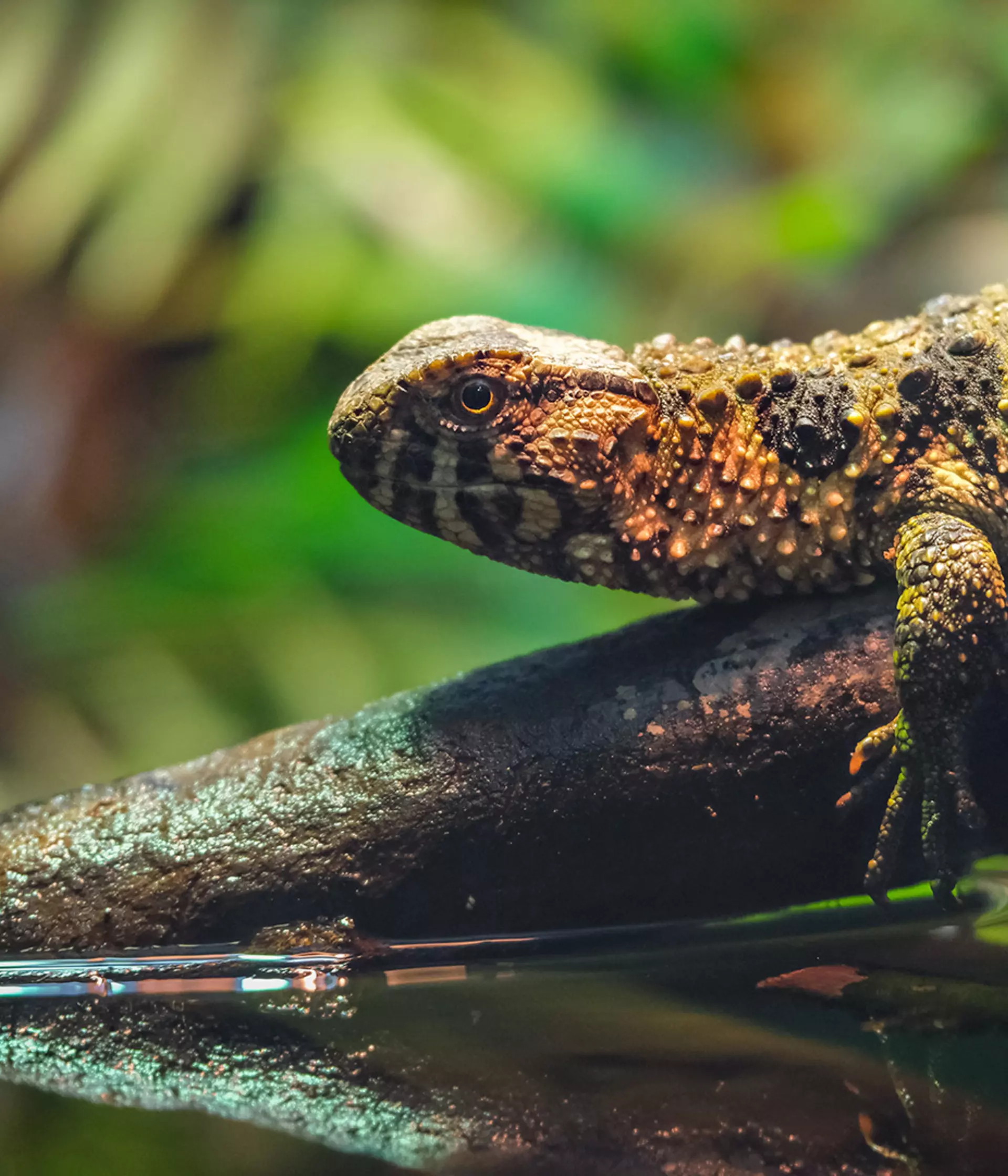
Crocodile lizard facts
- Crocodile lizards are diurnal reptiles, which are semi-aquatic and powerful swimmers. They’re known to be found close to slow-moving streams and pools.
- They give birth to live young – they’re viviparous – rather than laying eggs. The parents leave their newborns to feed and fend for themselves.
Are there crocodile lizards at London Zoo?
London Zoo is home to three crocodile lizards in the Secret Life of Reptiles and Amphibians habitat.
What do crocodile lizards look like?
They have heavily armoured skin, and a crocodile-like tail.

What do crocodile lizards eat?
They eat small invertebrates like snails, insects, worms and tadpoles.
What threats do crocodile lizards face in the wild?
It’s estimated that there are only around 1,000 individuals of the Endangered crocodile lizard remaining, and the populations are highly fragmented.
The main threats are habitat loss and harvesting for both domestic use and the international pet trade. Individuals can be worth the equivalent of two month’s salary for hunters, so the economic incentive is significant.

How is ZSL working to conserve the species?
The crocodile lizard is recognised as an EDGE reptile and is the sole surviving species in both its genus and its family, Shinisauridae. If the species were to become extinct, we stand to lose an entire branch of the tree of life that stretches back more than 100 million years!
We have supported an EDGE Fellow in Vietnam who undertook crocodile lizard surveys in northern Vietnam by looking for the presence of its DNA in streams to determine the true range of the species. Detecting lizard DNA indicates that they are living nearby and has led to the discovery of new populations.
Although the lizard does occur in protected areas, more than 50% of remaining populations are currently not protected.
Reptiles at London Zoo
A hub for science and conservation
Delve into the secretive habits of these remarkable animals as they blend expertly into their environments – hidden in leaves and branches or just beneath the water’s surface.
